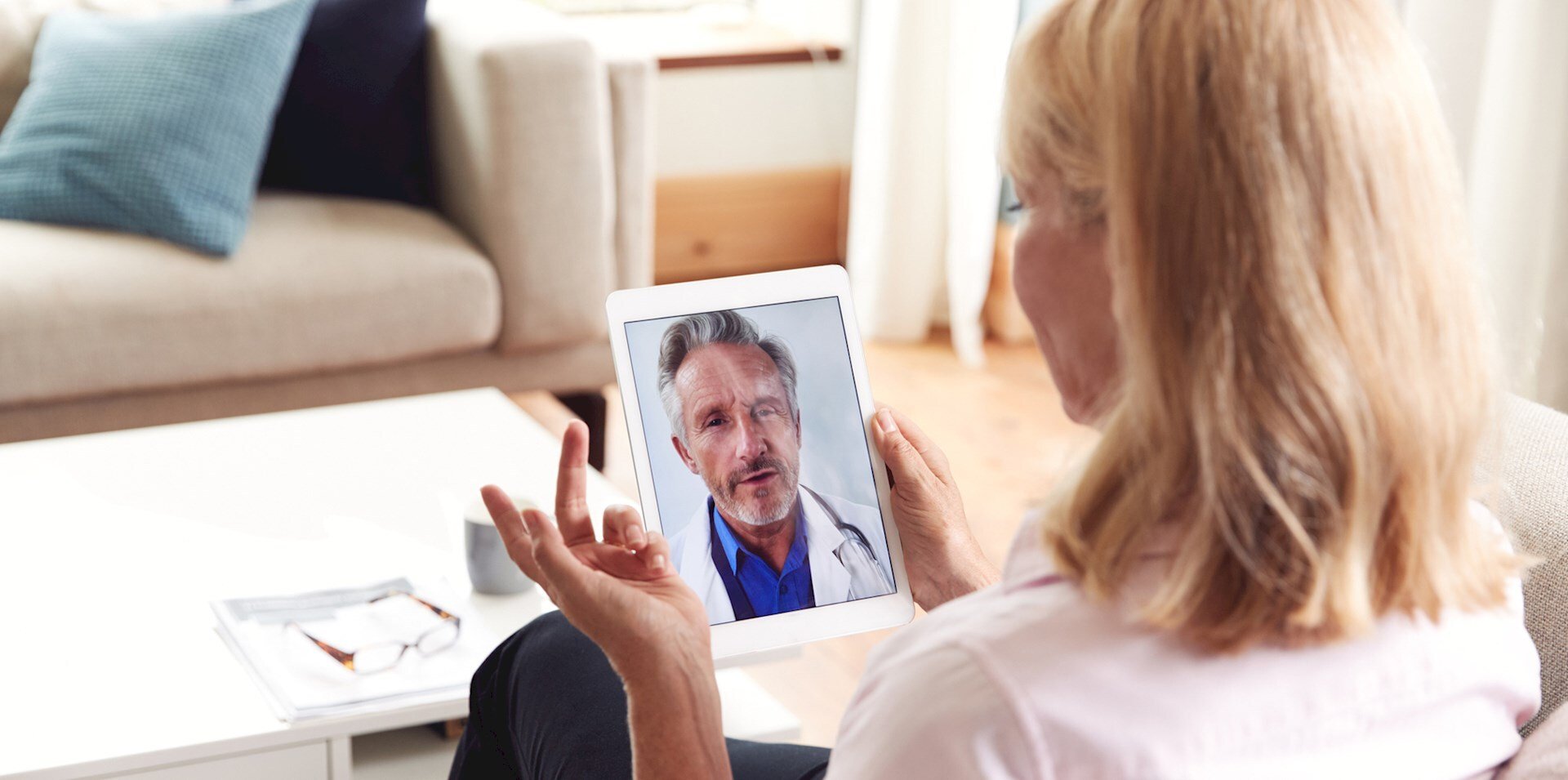When historians explain how the Internet and broadband connectivity changed humanity, in all likelihood, the current pandemic will be seen as an important inflection point, after which there were rapid advancements in the use this technology.
Despite the prevalence of Internet access in many, but not all, parts of the world, the COVID-19 pandemic has demonstrated that we’ve only just scratched the surface of how we can use digital connectivity to lead our lives. Could the current crisis herald a shift in our behavior, with face-to-face meetings – that need to ‘press the flesh’ (which sounds even more off-putting in our current state of social distancing) – becoming the exception to the norm of digital communication? COVID-19 is a chance to radically rethink how we use this capability and how we can unlock its boundless potential to improve quality of life.
Recently, I have been thinking a lot about three possible areas of development we should explore. The first is mobility and transportation, the second is urbanization and employment and the third is healthcare services. Below, I share some of these thoughts, as well as why we’ll need to do more than just expanding access in order to tap into this potential.
Mobility and transportation
After the lockdowns end, there will be huge efforts by the traditional transport industry to get us to resume our old habits. Airlines need bums on seats. The automotive industry needs us to believe electric vehicles represent the best contribution we can make to averting the looming climate crisis. But now we are experiencing what modern life could look like with significantly reduced demand on transportation networks. We are also reaping massive benefits to our environment and health, with significantly improved air quality (which Public Health England links to ‘between 28,000 and 36,000 premature deaths in the UK), a drop in traffic accidents (responsible for 25,000 serious injuries and 1,800 deaths in the UK, in 2018) and likely myriad other benefits to health, from avoiding time commuting to and from an office.
Given all of these benefits, I think the transport system is an obvious candidate for a post-COVID-19 rethink. Perhaps demand reduction for transport should be even more important than developing sustainable and smart, multi-modal transport systems, to efficiently cope with growing demand. Carbon reduction goals will be easier to meet with a reduction in overall journeys rather than merely seeking to replace petrol and diesel cars with less polluting electric vehicles. COVID-19 has given us a glimpse at future possibilities. With the current lockdowns, the environment is reaping benefits it would have taken decades of structured interventions to achieve. Policy decisions that would have faced resentful objections have been enforced with little to no debate. In London, the Royal Parks have been closed to road traffic, with rat run drivers giving way to families at play. Digital telecommunications have enabled behavioral changes that should now become a central consideration for those making transportation policies – avoiding, rather than simply optimizing, the need to travel.
Urbanization and employment
There are also broader implications for where we live and how we work. Regional imbalances in urbanization have long been a problem for the UK and many of parts of the developed world. Manufacturing has given way to a service economy, focused in and around capital cities or key regional centers. There are undoubtedly some regional success stories (look at what Glasgow, Manchester and Birmingham have done to reinvent themselves) but change has been hard-fought and is still a work in progress, even after decades of local efforts and devolutionary policies. One of the key challenges the regions face is creating well paid employment opportunities from new businesses and encouraging established companies to relocate from large cities like London.
But what if in a post COVID-19, fully digital communications enabled world, there is far less of an emphasis on workers needing to be physically present in corporate offices? How would that affect people’s decisions about where they want or need to live? I wonder how many more people would be willing to give up life in London if they no longer would have to commute into the city for work. I suspect that more people would be willing leave London’s over-inflated real estate and rental markets to live in more affordable (and spacious accommodations) in regional cities, or perhaps even in the countryside.
This could also benefit employers. If they let go of the need to have people physically located in offices, they could increase the candidate pool and potentially find more suitable employees. This could also significantly reduce the need to rent massive, pricey downtown office space. Perhaps this is a chance for the Internet to not only drive economic activity but also to help distribute it out from metropolises.
Healthcare services
Not surprisingly, the COVID-19 pandemic has had devastating impacts on healthcare systems in countries around the world. It’s now clear that as we recover from this crisis, we’ll need to make our healthcare systems more resilient. Some out-of-box thinking will be needed to do so. The expansion of broadband-enabled (or even mobile broadband) telecare and assisted living has the potential to significantly reduce demand on hospital facilities. This could lead to an overall reduction in hospital bed occupancy rates, a godsend when healthcare systems are coping with a pandemic or anything other disaster that leads to widespread injuries and fatalities. During this current crisis, the UK’s National Health Service (NHS) needed to free up around 50,000 hospital beds to create capacity to treat COVID-19 patients. Home telecare packages could have assisted in this objective, while allowing the NHS to continue monitoring discharged patients.
I predict that whenever normal life resumes the demand for more efficient use of hospital resources will not go away. The ability to support patients away from the hospital, without the need for even visiting the hospital, will have a profound impact on the economics of healthcare, not to mention how it should enable better outcomes for those who can continue to live supported in their own homes and communities. Connected care options will be essential for our aging populations and forward-thinking government authorities like Leeds City Council are already laying down the foundations for digital healthcare. Also, to come back to the transportation agenda, a Leeds City Council study found that a staggering 12% of transport journeys in the city area were related to medical or social care activities, and that healthcare staff drive a combined one million miles between sites, for appointments. Connected care interventions can create a virtuous circle, reducing demand on the transport systems, with knock-on environmental and health improvements, which themselves will reduce demand on healthcare systems.
Why we need more than expanded areas of service
In order to unlock this fuller range of benefits from broadband connectivity, we have to do more than just giving everyone access. Don’t get me wrong; I believe that providing everyone with free, social broadband (not to be confused with barely usable, shared Wi-Fi) should be a top priority after this pandemic. But this effort has to be supplemented with an effort to make sure that everyone knows how to make use of the Internet.
The UK government has poured hundreds of millions of pounds into uplifting network reach and performance in areas with poor broadband coverage – i.e. supporting the ‘geographically disadvantaged’ (and is planning to spend £5 billion pounds (GBP) or more on rural broadband ), but is doing very little to connect the ‘socially disadvantaged.’ The latter are people who cannot afford broadband, even if they happen to live in a well-connected area. This needs to change.
The Economist magazine reported that, in the UK, “27% of private secondary school teachers communicated with pupils via video on the first day schools were shut, compared with 2% of those in state schools.” For children with no home broadband, even access to a basic platform, which lets teachers leave homework topics and for students to submit work – a long way from an interactive learning platform – is an inaccessible resource. The truth is that COVID-19 will, in all probability, widen the achievement gaps between the well-resourced and supported middle class children and their less well-off counterparts. This should be an obvious area of concern for educational authorities in all countries. All students, regardless of their socio-economic background, need access to free social broadband (rather than the discounted ‘social’ packages offered by operators), so that anyone can access educational resources.
Special attention will also need to be paid to helping the digitally unsavvy learn to use hardware and software to connect to the Internet. There will need to be a focus on the elderly, as well as the poor. This will be a massive undertaking, but it will pay dividends over time.
Underlying all of my thinking here is the principle that we need to stop thinking about telecoms and digital technology in separate silos and instead see them as the glue that binds society together. This shift in our understanding of the role of the Internet can play in our lives has untold potential to revolutionize our economies, healthcare, education, transportation, and our impact on the natural world. If we’re smart, broadband connectivity can help us create a much more sustainable future.





